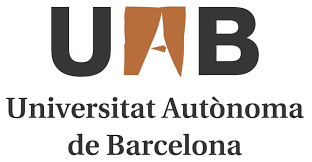Life cycle assessment (LCA) is a tool for identifying/comparing the whole life cycle, or cradle-to-grave, environmental impacts of the creation, marketing, transport and distribution, operation and disposal of specific human artefacts. The approach considers direct and, ideally, related processes and hidden, non-market flows of raw materials and intermediate inputs, and waste and other material and energy outputs associated with the entire existence or ‘product chain’ or ‘system’. The LCA procedure often involves a comparison of a small number of substitutable products assumed to provide a similar consumption service. LCA is conducted to explore answers to questions such as: How do two different manufacturing processes for the same product compare in terms of resource use and emissions? What is the benefit of changing technology? What are the relative contributions of the different stages in the life cycle of this product to total emissions?
The quantification of inputs and outputs of a system, i.e. its material and energy flows, is called life cycle inventory (LCI). In the case of production processes with more than one product, an allocation problem arises in LCI: what share of the environmental burdens of the activity should be allocated to the product in question, i.e. included in the LCI? The chosen solution to the allocation process can have a decisive impact on results of a LCI and a number of different solutions have been proposed including a standard procedure by ‘The International Organization for Standardization’ (ISO 14041, 1998) (Ekvall and Finnveden, 2001).
Life cycle impact assessment (LCIA) converts ‘inventoried’ flows into simpler indicators. In a LCIA, essentially two methods are followed: problem-oriented methods (mid-points) and damage-oriented methods (end points). In the problem-oriented approaches, flows are classified into environmental themes to which they contribute. Themes covered in most LCIA studies are greenhouse effect (or climate change), natural resource depletion, stratospheric ozone depletion, acidification, photochemical ozone creation, eutrophication, human toxicity and aquatic toxicity. These methods aim at simplifying the complexity of hundreds of flows into a few environmental areas of interest. The damage-oriented methods also start by classifying a system’s flows into various environmental themes, but they model the damage of each environmental theme according to its effect on human health, ecosystem health or damage to resources. For example, acidification – often related to acid rain – may cause damage to ecosystems (e.g. in the Black Forest in Germany) but also to buildings and monuments. In essence, this method aims to answer the question: Why should we worry about climate change or ozone depletion?
LCIA have been developed as tools to broaden the information and context of LCI data, which refer mainly to mass and energy. The fact that LCI indicates that certain emissions are associated with certain environmental themes or impact categories does not imply that the studied product or system actually causes effects. It means, however, that in the course of the life cycle, emissions are generated that contribute to a pool of similar emissions known to be associated with these environmental themes or impact categories. Used in this way, LCIA is an appropriate tool for helping to determine to what extent a particular product, process, ingredient or emission may be associated with a particular impact category.
References
Ekvall, T. and Finnveden, G. (2001) Allocation in ISO 14041 – a critical review, Journal of Cleaner Production, 9 (3) 197-208.
For further reading:
Ayres, Robert U. and Kneese, Allen V. (1969) Production, Consumption and Externalities, in American Economic Review 59 (3) 282-297.
Ekvall, T. and Finnveden, G. (2001) Allocation in ISO 14041 – a critical review. Journal of Cleaner Production 9 (3) 197-208.
Fischer-Kowalski, Marina and Haberl, Helmut (1993) Metabolism and Colonization. Modes of Production and the Physical Exchange between Societies and Nature, in: Innovation – The European Journal of Social Sciences 6 (4) 415-442.
Fischer-Kowalski, Marina and Weisz, Helga (1999) Society as a hybrid between material and symbolic realms – towards a theoretical framework of society-nature interaction, in: Advances in Human Ecology (8) 215-251.
Haas, W, Hertwich, E, Hubacek, K, Korytarova, K, Ornetzeder, M, Weisz, H, (2005) The Environmental Impacts of Consumption: Research Methods and Driving Forces. IIASA Interim Report IR-05-027 [April 2005, 96 pp]
Haberl, H., M. Fischer-Kowalski, F. Krausmann, H. Weisz, V. Winiwarter (2004) Progress towards sustainability? What the conceptual framework of material and energy flow accounting (MEFA) can offer. Land Use Policy 21(3) 199-213.
Weisz, Helga (2006) Accounting for raw material equivalents of traded goods. Acomparison of input-output approaches in physical, monetary, and mixed units. Social Ecology Working Paper 87. Vienna.
Useful Websites:
Social Metabolism and MFA [http://www.uni-klu.ac.at/socec/inhalt/1860.htm]
Local Studies Manual – Social Ecology Working Paper [http://www.uni-klu.ac.at/socec/downloads/WP120_Web.pdf]
This glossary entry is based on contributions by Willi Haas, Simron Jit Singh and Annabella Musel
EJOLT glossary editors: Hali Healy, Sylvia Lorek and Beatriz Rodríguez-Labajos





Excellent post. I definitely love this site. Continue the good work!
I am actually delighted to read this web site posts which includes tons of helpful data, thanks for providing
such information.